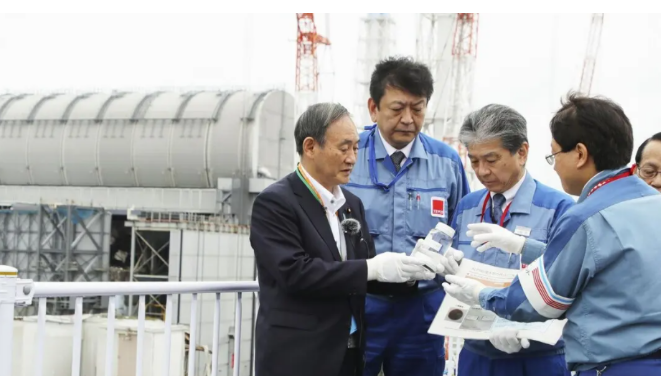Eleven years after the disaster at the Fukushima nuclear power plant in Japan, the effects are still being felt. It all started with an earthquake around the Fukushima area.
Eleven years ago, the earthquake lasted about three to six minutes, and the earthquake totally destroyed the infrastructure in the area, including electricity, gas, water and railways. The quake was so severe that it took less than an hour for the region to move east on its axis to trigger a tsunami, the first of numerous to hit the country's northern coast.39bet-kết quả bóng đá-kết quả xổ số miền bắc-kèo bóng đá -soi cầu bóng đá-đặt cược
Waves as tall as 25 to 30 metres were reported in some areas, exceeding protective seawalls and extending as far as 10 kilometres from the town of Sendai. The rapid pace of events left residents with limited time to evacuate villages in the area. All three operating nuclear reactors at the Fukushima plant managed to shutdown during the emergency, but backup power and cooling systems failed because transmission towers were toppled by the earthquake. The fuel rods generated waste heat due to the lack of backup power, while the partial melting of the external power supply interrupted the emergency backup diesel generators successfully started up, but less than an hour after the earthquake, the tsunami hit the plant with waves of 14 to 15 meters height, because the emergency backup generators were underground, they were flooded with seawater. Electrical equipment, such as pumps and fuel tanks, was washed away or damaged, leaving the plant entirely without power and causing extensive blackouts.
On March 12 and 14 of the same year, there were explosions at reactor No. 1 and Reactor No. 3, respectively, with serious consequences. On March 15, the government evacuated everyone within a 20-kilometer radius. The building housing the No. 2 reactor exploded again, releasing additional radiation. There have also been multiple chemical explosions at the plant, severely damaging buildings. Radioactive material began leaking into the atmosphere and thousands of people in the Pacific had to leave their homes as workers used water cannons and sea pumps to cool overheating facilities. In the months that followed, the fallout from the incident became extra severe, and the government eventually evacuated all residents within a 30-kilometer radius of the plant.
 The chain reaction of the catastrophic event, which killed more than 19,000 people and led to the evacuation of more than 465,000, continues a decade later. The damage has also cost the Japanese people hundreds of billions of dollars in economic costs and it is estimated that the cleanup could take up to 2051. About 150,000 people living near the damaged reactors had to be evacuated because of the threat of radioactivity. This in itself would surely cause mental strain and evacuation-related deaths. To this day, the Earth is reportedly still leaking radioactive material.
The chain reaction of the catastrophic event, which killed more than 19,000 people and led to the evacuation of more than 465,000, continues a decade later. The damage has also cost the Japanese people hundreds of billions of dollars in economic costs and it is estimated that the cleanup could take up to 2051. About 150,000 people living near the damaged reactors had to be evacuated because of the threat of radioactivity. This in itself would surely cause mental strain and evacuation-related deaths. To this day, the Earth is reportedly still leaking radioactive material.
One recent announcement was that Japanese officials plan to release more than a million tons of radioactive water. Given the severity of events, the plant of ocean health consequences the relative control is obtained by the health effects of radiation, not only on the emergency personnel, and on residents, additional serious health consequences of this event, including death, in the process of evacuation displaced the elderly man's mortality rate increased, and the collapse of nuclear radiation emergency systems. In a survey of mental health, it was found that residents in evacuation zones suffered severe psychological distress as a result of the Fukushima accident. In addition, there are lifestyle related issues, such as an increase in the proportion of overweight people, increased prevalence of hypertension, and changes in health-related behaviors among evacuees, which may lead to increased cardiovascular disease in the future.
These health effects are much more significant than physical effects, but have not been correctly addressed. Inpatients and elderly residents of nursing facilities were quickly evacuated by bus soon after the crash. The evacuees were not accompanied by any medical personnel, and they were placed in the seats of packed buses, in full protective clothing, without any form of medical care or even food for several hours during the evacuation. As a result, dozens of patients died during the evacuation, which was claimed to minimize radiation exposure. These people face life-threatening not radiation, but the lack of medical care, daily living conditions and shelter led to several types of health problems, such as the outbreak of infectious diseases and mental pressure. In addition, the sudden shift of lifestyle in a foreign country may lead to behavioral problems, because of poor ability to adapt to a new environment.